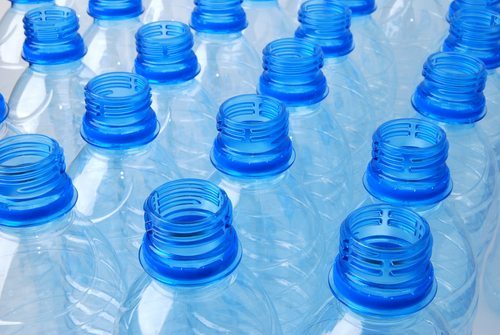
The report, “Cleaning the rPET Stream: How we scale post-consumer recycled PET in the U.S.,” was prepared by consulting and research firm Resource Recycling Systems (RRS) with input from the Association of Plastic Recyclers (APR) and the National Association for PET Container Resources (NAPCOR).
“The study identifies a set of levers that can be pulled to clear the way for brand owners to make the additional investment in the use of RPET [recycled PET],” Nelson Switzer, chief sustainability officer for Nestlé Waters North America, stated in a press release. Nestlé Waters North America is an investor in Closed Loop Fund and a member of APR. “If the right combination of these levers can be pulled, costs for rPET will decline and use will increase – a win-win for the environment and the economy.”
The report looked at several interventions that can improve PET recycling:
- Improving sorting and quality control at materials recovery facilities (MRFs), including installing optical sorters and robotics equipment and implementing best management practices.
- Installing equipment to bypass the pellet stage of processing, allowing plastic flakes to be directly blended with virgin resin or molded into bottle preforms (traditionally, recovered PET bottles are turned into flakes before they’re melted and turned into pellets, which are used to mold final products).
- Having brands commit to using packaging that meets APR Design Guidelines. The guidelines are meant to ensure packaging can be recycled through existing recycling infrastructure.
- Having brands enter into long-term recycled PET purchase agreements.
- Using chemical recycling technologies to break down PET into its chemical building blocks, which can be sold to virgin plastics producers to make new PET.
- Developing markets for non-PET materials, which would give MRFs incentive to keep those other marketable materials out of PET bales.
The study estimates the suite of interventions would benefit MRFs by improving yields, reducing costs and increasing revenue opportunities.
For plastics reclaimers, the improvements would boost yields, lower costs and reduce exposure to price volatility and commodity risks. For brand owners, they would increase the volume of higher-quality recycled PET at a lower cost, provide more flexibility in end uses for the recycled plastic and reduce volatility in price.
If implemented at scale, the improvements could mean an additional 370 million pounds of PET bottles are recycled each year. If that were the case, the national PET bottle recycling rate would jump from its current level of 28 percent to 34 percent.